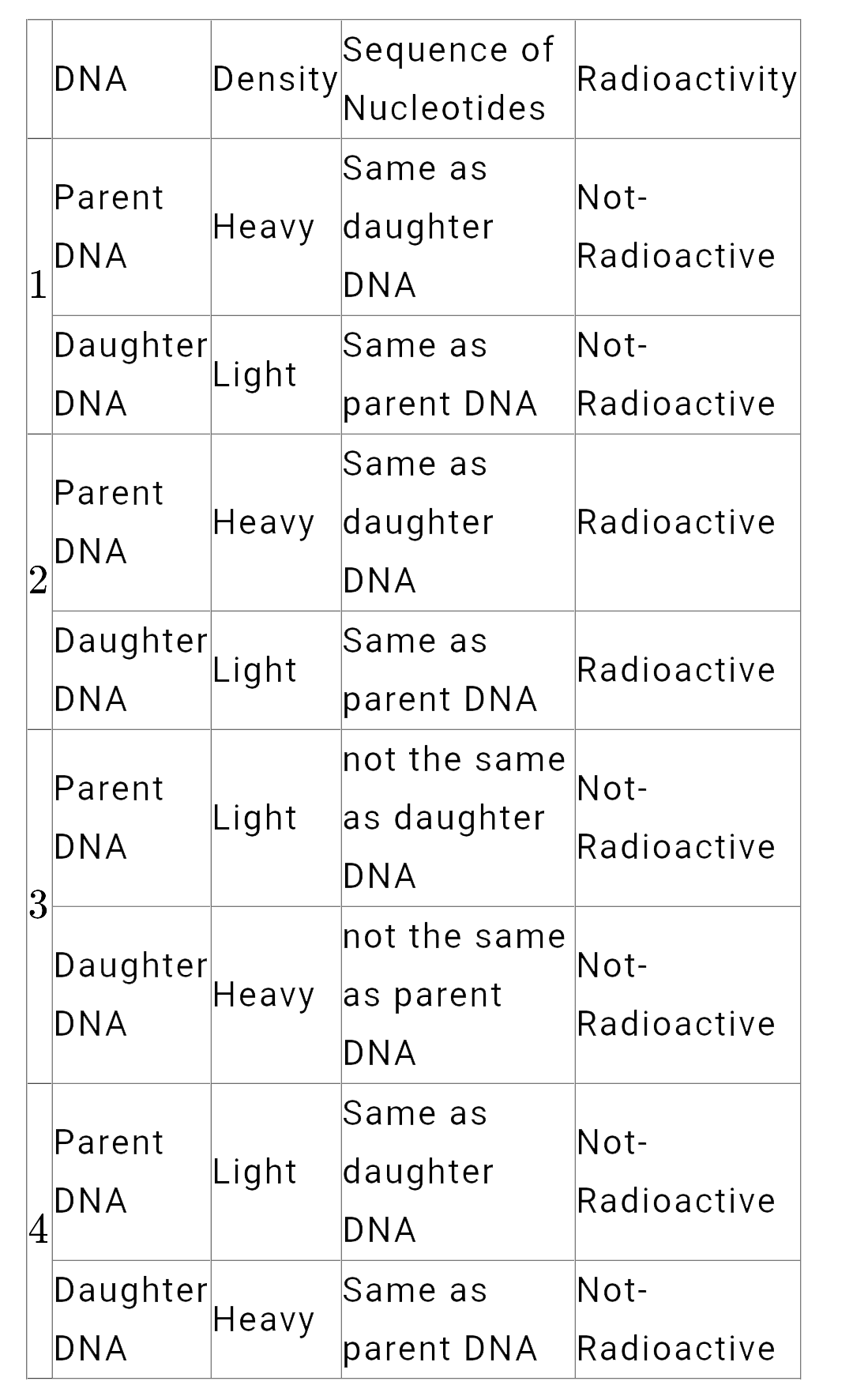A dsDNA found in E. Coli has N15 labeled nitrogen bases. This organism was provided with N14 based nitrogen bases for the replication process . The two new DNA molecules synthesized after one round of replication in the N14 based medium . Which of the following options correctly describes the comparison between parent DNA and daughter DNA ?

1
2
3
4
The correct Answer is:A
Step by step video & image solution for A dsDNA found in E. Coli has N^(15) labeled nitrogen bases. This organism was provided with N^(14) based nitrogen bases for the replication process . The two new DNA molecules synthesized after one round of replication in the N^14 based medium . Which of the following options correctly describes the comparison between parent DNA and daughter DNA ? by Biology experts to help you in doubts & scoring excellent marks in Class 12 exams.
Updated on:21/07/2023Topper's Solved these Questions
Similar Questions
[" The ratio of light and "],[" hybrid DNA molecules "],[" after two generations of "],[" replication in "^(14)" N medium "],[" (according to Meselson "],[" and Stahl "s" exp) "" < "]
View SolutionA DNA molecule in E. coli is heavy and labelled with N15. Iit is allowed to replicate in a medium containing N14. After one generation of replication, the two daughter molecules will
View Solution
Knowledge Check
Which of the following bases is not present in D.N.A. ?
AUracilBAdenineCCytosineDGuanineWhich of the following nitrogen base is not found in DNA -
AThymineBCytosineCGuanineDUracilA bacteria containing 100% N15 nitrogen bases is allowed to replicate in medium containing N14 bases. After one round of duplication , the result would be
Aall individuals would be identical to parentsBall individual would be radioactive , but the percentage of radioactive in DNA would be 50%Conly 50% individuals would be 50%Dall individuals would be similar to parents , but different among themselves
Escherichia coli fully labelled with .15N is allowed to grow in .14N medium. The two strands of DNA molecule of the first generation of bacteria have :
View SolutionEscherichia coli, in which both the strands of DNA are labelled with.15N, is transferred to .14N medium and allowed to replicate for two generations. Find out the number of hybrid DNA molecues in the second generation
View SolutionEscherichia coil fully labelled with .15N is allowed to grow in .14N medium. The two strands of DNA molecule of the first generation bacteria have
View SolutionIf 50 heavy DNA (N15) molecules are replicated 2 times in N14 medium, what is obtained?
View SolutionA DNA molecule of Escherichia coli is heavy (full labelled with N15) and is allowed to duplicate in a medium containg N14. In first generation, the two daughter DNA molecules:-
View Solution